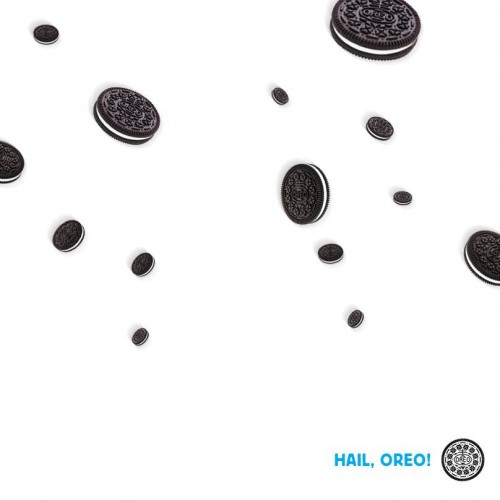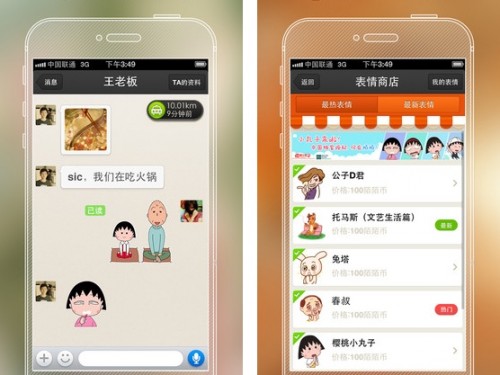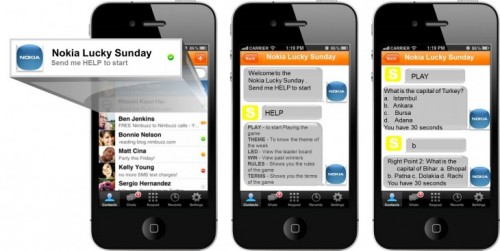We Are Social Asia Tuesday TuneUp #84
Hail hit Singapore after haze, Oreo stays relevant and clever with “Hail, Oreo”
After a record-breaking haze in Singapore that has made over one fourth of a million people in Singapore voice out on Twitter, another weather surprise, hail hit western part of Singapore on last Tuesday. According to NEA, this is the first time since the last reported hail five years ago. This rarely seen hailstones made people share pictures and video footage on social media. Oreo, known as the brand that has been doing an amazing job of creating hyper-relevant and on trend content to what happens in timely and witty manner, didn’t miss out the chance to get on hail with the Facebook post “Hail, Oreo” brought out within an hour of the initial report came out.
Beijing’s Water Cube change lights based on emotions from users on Weibo
Beijing’s National Aquatics Center built for the 2008 Beijing Olympics, also known as Water Cube(水立方), has been turned into an interactive lighting building by collaborative efforts from conceptual artist Jennifer Wen Ma and lighting designer Zheng Jianwei. By using a custom software application, the Water Cube translates emoticons contributed by millions of users of Chinese social networks, Sina Weibo and Tencent Weibo into dynamic and interactive lighting experience.
China’s top flirting app, Momo has added new features for monetization
Reported by QQ Net, China’s top dating app, Momo has updated new features in an attempt for monetization. Momo users can enjoy VIP benefits such as extra avatars and following more than 100 people by paying $2 per month or $17 for one year. Without becoming VIP members, users also can buy a variety of stickers using the app’s virtual currency, which is the most of popular chat apps like Line, WeChat and Kakaotalk’s monetization strategy. With 40 million registered users worldwide (The app is available in English for international users), Momo has received $40million funding last summer (There is a rumor that China’s e-commerce giant, Alibaba has taken a part). It will be interesting to see how Momo will shape itself to becoming a larger app beyond its niche service to face giants like WeChat.
Nokia uses chat app Nimbuzz for campaigns to reach mobile users in India
Nokia has partnered with India based messaging app Nimbuzz to run its interactive marketing campaigns. With more than 150 million registered users worldwide, similar to Kakaotalk and Line’s service to official account, Nimbuzz offers brands/corporate account mobile marketing channels to engage users through mobile and promote message. The main campaign concept revolves around hosting various quizzes every Sunday and reward top performers with discount or free Nokia related merchandise. With growing competition with local players, Nokia tries to tap into Nimbuzz, a cross-platform service to reach wider user base of not only Nokia phones also rivals’ and feature phone users for higher penetration in the market.
Social more important than keywords for high Google rankings
Searchmetrics’s Rank Correlation 2013 study has discovered that strong social presences correlate to a high ranking on Google. The correlation coefficient, a stat used to measure how close the relationship is between two factors, shows that Google +1s are, unsurprisingly, the most strongly related to a high search ranking, with a coefficient of +0.4. These are followed closely by Facebook shares (+0.34), Pinterest pins (+0.29) and Tweets (+0.28). This far outstrips the importance of keywords; a keyword in the domain name has a correlation of +0.03, down from +0.11 in 2012, while a keyword in the URL has gone down from +0.04 to +0.01 in the same period.
Facebook, Twitter and Pinterest affect purchasing offline as well as on
Four surveys, conducted by Vision Critical with over 5,900 responses, have shown thatsocial networks affect in-store purchasing as much as they do online purchasing. Facebook is the most successful of the 3 at driving both types of behaviour, although it’s worth noting that 1 of every 3 people who bought items they pinned on Pinterest said they hadn’t even thought about buying the item before seeing it on the network.
Online complaints often inspired by vengeance
A study into 2000 social media complaints has produced a number of interesting results about the people who complain online. 30% do so because of ‘negative feelings’, while 23% wish simply to exact vengeance; this group in particular are inclined to complain via social media. There is also a huge discrepancy between those who expect a response (70%) and those who receive on (38%), showing the work still left for brands to do in dealing efficiently with customer service online.

Updates to Facebook hashtags
Earlier this month, Facebook brought hashtags to its desktop site; now, it’s added mobile support and introduced ‘related hashtags’. Now, if you search for something like #equality, you’ll also see the likes of #loveislove, #DOMA and #pride.

The mobile update is, for now, only available on m.facebook.com, with the network’s mobile apps still waiting for hashtags to arrive.
Facebook trying to stop ads appearing next to NSFW content
After furore in May about ads appearing next to content that promoted violence against women, Facebook has taken action to prevent adverts appearing alongside controversial content. Previously, ads (which are targeted by user, not page) had simply appeared across Facebook. From this week, though, Facebook will be using an algorithm to detect pages likely to contain inappropriate content, then having these verified by staff. Those deemed inappropriate will be prevented from having ads appear next to them. There are plans to improve the system already, too. In a blog post, the network stated:
In the coming weeks, we will build a more scalable, automated way to prevent and/or remove ads appearing next to controversial content
Facebook Newsfeed ads 21x as effective as standard web retargeting
Facebook has put a lot of effort into increasing the effectiveness of their ad offering and it seems to be working. Compared to standard web retargeting ads, Newsfeed ads produce twenty-one times the click through rate, amounting to a 77% lower cost-per-action. Meanwhile, the network has doubled the number of stats available to advertisers to measure effectiveness, with reach and frequency measurable by all of the following: unique clicks, unique click-through rates, cost per unique click, cost per 1,000 viewers reached, people taking action due to an ad and mobile/web app installs.
Instagram video takes huge cut of Vine share on Twitter
After a huge initial share of Twitter links, Vine’s share has dropped significantly after the launch of video on Instagram. On the day of the launch, Vine links declined from around 2.5 million to 1.5 million and have continued decreasing since. Instagram links have remained fairly constant (despite Twitter’s blocking of in-tweet Instagram media) and are now higher than Vines for the first time in almost a month.

Updates to Google+ for its 2nd birthday
Happy birthday to Google+! The network has now turned 2 and its creators are celebrating by updating some of its features. Firstly, we have new buttons for follow, share and +1, the first of which is shown below:

Secondly, the following picture depicts the updates to profile and page badges, while G+ communities will also receive their own badges.

Finally, it’s now easier to upload, move and download pictures. A new download feature allows photos to be quickly saved, while uploading and moving has been updated to allow easier shifting of large batches of images.
Check in friends on Foursquare for iOS and Android
Foursqaure’s iOS and Android apps have been updated with the ability to check in your friends. Previously, you could mention friends; now, provided they consent, you can also check them in at a location. If they don’t offer consent, your ‘check in’ will simply appear as a mention. The process is highlighted in the image below.

LinkedIn introduces ‘Who’s Viewed Your Updates?’ feature
LinkedIn has introduced an interesting new feature: a tool that allows users to see who’s viewed their updates, as well as what interaction has occurred from their 1st, 2nd and 3rd degree connections. The system, shown here, includes a simple ‘colour coding’ scheme, allowing users to easily view the effect of their content.

We Are Social create ‘social wine’ campaign for Tesco
We Are Social have created a campaign for Tesco, which asks the supermarket’sFacebook community to produce a ‘social wine’. After having a team of influencers vote on 5 wines, all made from grapes collected by the Enaleni community of South Africa, Tesco’s Facebook fans will be able to suggest names and bottle designs; the winners of each of these competitions will not only have their entries used for the final product, but also win a trip to South Africa.
#MashTag, the social beer
The world of social media has clearly had a boozy week, with Brewdog releasing their socially-designed beer, #Mashtag. Elements of the brew were voted on across a week, from the strength to the flavours included. The result: a 7.5% American Brown Ale, made with New Zealand hops and aged on hazelnuts and oak chips.
Hyatt Hotels link with Postagram
Hyatt Hotels have created a campaign through Postagram, that allows guests to personalise postcards through their social channels and physically send them to friends. Users add a photo and 180-character message to the postcard, then send it to a friend for free – a nice mix of social marketing and a traditional format.




